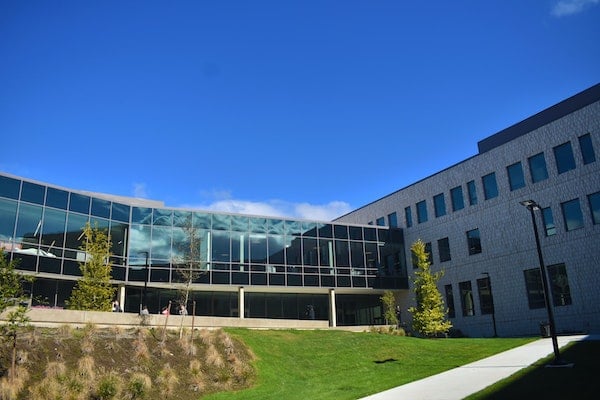Published on
Growing Continuing Education within the Community College

As more adult learners look to higher ed to get them into the workforce, it’s important to illustrate the career opportunities available to them. By creating non-credit programming and services, community colleges can use Continuing Education to get these adult learners in the door and on the lifelong learning path. In this interview, Debbie Rulo discusses the obstacles community college continuing ed leaders face, the importance of career pathways and how to begin to build a stronger bridge between credit and non-credit.
The EvoLLLution (Evo): What are some of the key obstacles that community college continuing ed leaders face when it comes to developing programs and support services for non-credit students?
Debbie Rulo (DR): In Continuing Education, we just want to make sure we’re offering what businesses and individuals in the community actually need today. And then we plan with them for what they may need in the next few years. So, in order to do that, it’s really important that we have a relationship with key customers in the community. Just because Microsoft has something shiny and new does not mean anyone is using it, and it does not mean that we’re going to offer it unnecessarily. Our institution is very good about taking risks and trying new things. We’re very fortunate that way, but just because it’s there doesn’t mean we have to offer it.
It’s really about matching up our offering with community need. We need to make sure we are meeting with new companies and forming partnerships with organizations. We offer training through open enrollment that’s available to anyone. We also do what we call contract training for individual companies. That’s probably much like any continuing education organization. We can’t have everything for everybody, but we try to have what we can for most.
Evo: How do you balance the need to maintain some level of sanity for staff while also delivering on the extremely high expectations of employers and non-traditional students?
DR: As an organization, we can only do so much by ourselves, and that’s where we try to partner with other organizations who are doing something great. Why do we have to reinvent the wheel? Let’s partner to help spread what they’re doing to our customers in our region to fulfill their needs, especially in technology. It’s good for us, but it’s really good for the customers in our community.
Evo: How do you ensure that students can see the career pathways available to them as a result of the programs they’re taking?
DR: We talk to the community, do a lot of research, look at the kinds of jobs that are being posted in our region. What are the certifications they’re asking for? Are we offering them? That’s part of how we measure how well we’re doing.
What I would like to see more of are pathways from Continuing Ed to credit for those who want to take them. I know our organization could do a better job of this. Our worlds are very different, and it’s just about trying to make that work for both worlds, which can be difficult.
Evo: What should folks be thinking about as they look more seriously at creating bridges from non-credit to credit?
DR: We’re starting to look at some digital credentialing through CE, which has modules that will build on each other. This could possibly be equivalent to a one-credit hour intro class on the credit side. Why is that hard? It’s really the coordination of it all. It’s slower on one side than it is on the other. We can move pretty quickly in CE, since we are not held to many of the state requirements.
Some curriculum areas may also be easier to work with than others. Sometimes technology is a little more straightforward, especially when it comes to industry standard certifications.
Evo: How do organizations like NCCET support the growth of Continuing Ed at community colleges?
DR: NCCET is a fairly new organization for me. Their first conference was actually the last in-person conference I went to. They are my kind of non-credit continuing education, and the individuals who were there spoke the same language as I do, so that made me feel comfortable. Anytime you can get many community colleges together—brainstorming or talking about what we’re doing, what’s working well, what’s not—it’s only going to make your program better by sharing ideas and having resources.
Now Monica Johnson, our regional director, is in my backyard. She’s not very far from my institution, so that’s great. It allows us to build a better relationship as well as with all of the surrounding states and areas that I currently do not have contacts in. It’s going to be really good for us all to get together. We can share ideas with each other and discuss what companies and partnerships are helping our organizations to grow. The sharing of ideas is what I really like about being part of NCCET. Once we start building up the regional activity, it will be beneficial to all.
Evo: Is there anything you’d like to add about your vision for how the regional approach that NCCET is taking can help create new opportunities for community colleges in your area?
DR: Monica and I have not actually talked yet about putting an action plan in place, but one of the things that I would like to put on our agenda would be how we can grow the regional membership for NCCET. I’m sure many other institutions are unfamiliar with all the wonderful things that NCCET has to offer, so I’m anxious to just start contacting them to see if they would like to jump on board.
This interview was edited for length and clarity.
Disclaimer: Embedded links in articles don’t represent author endorsement, but aim to provide readers with additional context and service.
Author Perspective: Administrator
Author Perspective: Community College



